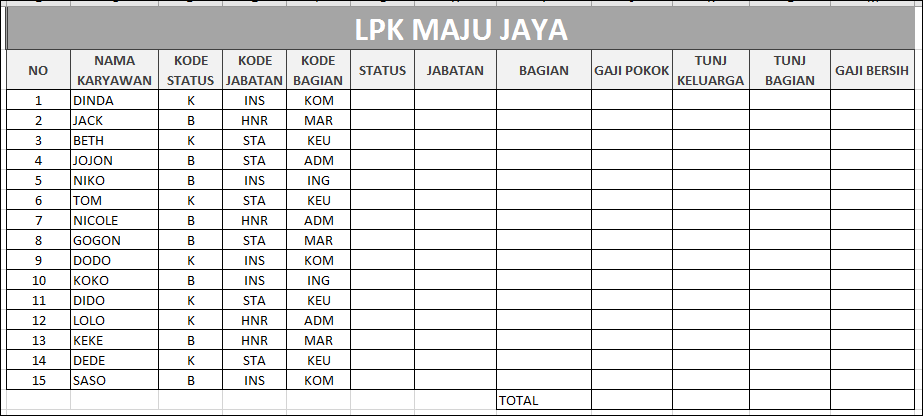

- #Contoh soal dan jawaban vlookup.pdf how to
- #Contoh soal dan jawaban vlookup.pdf full
- #Contoh soal dan jawaban vlookup.pdf free

#Contoh soal dan jawaban vlookup.pdf full
For example, you can combine first name and last name inside the VLOOKUP to search against a full name column.Contoh Soal pilihan ganda bahasa Inggris dan jawabannya kelas X semester 2 berikut ini, berisikan materi tentang 'The Expressions of Thanking, Complimenting, and congratulating', selain itu ada juga bentuk soal dengan 'Present Perfect Tense' dan Preposition of Time: at/on/in.īaca juga, materi yang sama dalam bentuk essay/uraian: Contoh Soal Essay Bahasa Inggris dan Jawabannya Kelas X Semester 2īerikut ini, soal PG Bahasa Inggris beserta jawabanĬhoose the best answer by crossing a, b, c, d, or e!ġ.
#Contoh soal dan jawaban vlookup.pdf how to
This tutorial shows you how to perform a VLOOKUP using multiple input criteria. VLOOKUP Multiple Criteria in Google Sheets This tutorial will show you how to do that without requiring multiple VLOOKUP formulas. Have you ever wanted to return more than a single column with VLOOKUP? Perhaps you want to combine two tables andīring all the data across. Have Vlookup Return Multiple Columns in Google Sheets However, there’s a technique usingĪrray Literals that lets us return values from columns to the left of the lookup column. Regular VLOOKUP formulas will only return values from columns to the right of the lookup column. How To VLOOKUP To The Left In Google Sheets? How to use wildcard characters “*” to perform partial matches in Google Sheets. Google Sheets Using Wildcards For Partial Matches The VLOOKUP function in Google Sheets is typically used to bring data from one data table and add it into another. Open in an Incognito window you’ll be able to see it. If you can’t access the template, it might be because of your organization’s Google Workspace settings.
#Contoh soal dan jawaban vlookup.pdf free

you’re asking the VLOOKUP formula to return values from column 4 of a lookup table that If the index number is greater than the number of columns in the lookup table (i.e. The index value (the third argument) determines which column of the lookup table to use. If the search term is found, the value from a specific cell of that row is returned. VLOOKUP always searches down the first column of this table. The second argument, range, is the lookup table, i.e. The search_key is the item from the original table that you want to search for in the lookup table. The horizontal lookup, which is used much less frequently, is called the HLOOKUP. It gets this name because it searches for a value up and down a column, i.e. The name VLOOKUP stands for Vertical Lookup. no characters), then it doesn’t matter if there turns out to be nothing in front of (or after) our partial string. Since the wildcard characters can also represent nothing (i.e.

No problem! We can simply add a second wildcard in front of the partial match and proceed as before. Partial match potentially has missing characters before as well as after it? If you right-click the link and open it in an Incognito window you’ll be able to see it. The workbook here and feel free to make your own copy ( File > Make a copy…). The rest of the formula is just a regular VLOOKUP. In other words, it would match “Mye”, “Myers”, “Mye123”, “ #”,…etc. The G$2&"*" searches for the string “Mye*” where the * is known as a wildcard and represents a string of anything, or nothing, that could follow on after “Mye”. We use this formula to achieve that, e.g. Name column to find the one starting with “Mye”, even though we don’t know the full surname. The idea here is that we’ll search through the Last


 0 kommentar(er)
0 kommentar(er)
